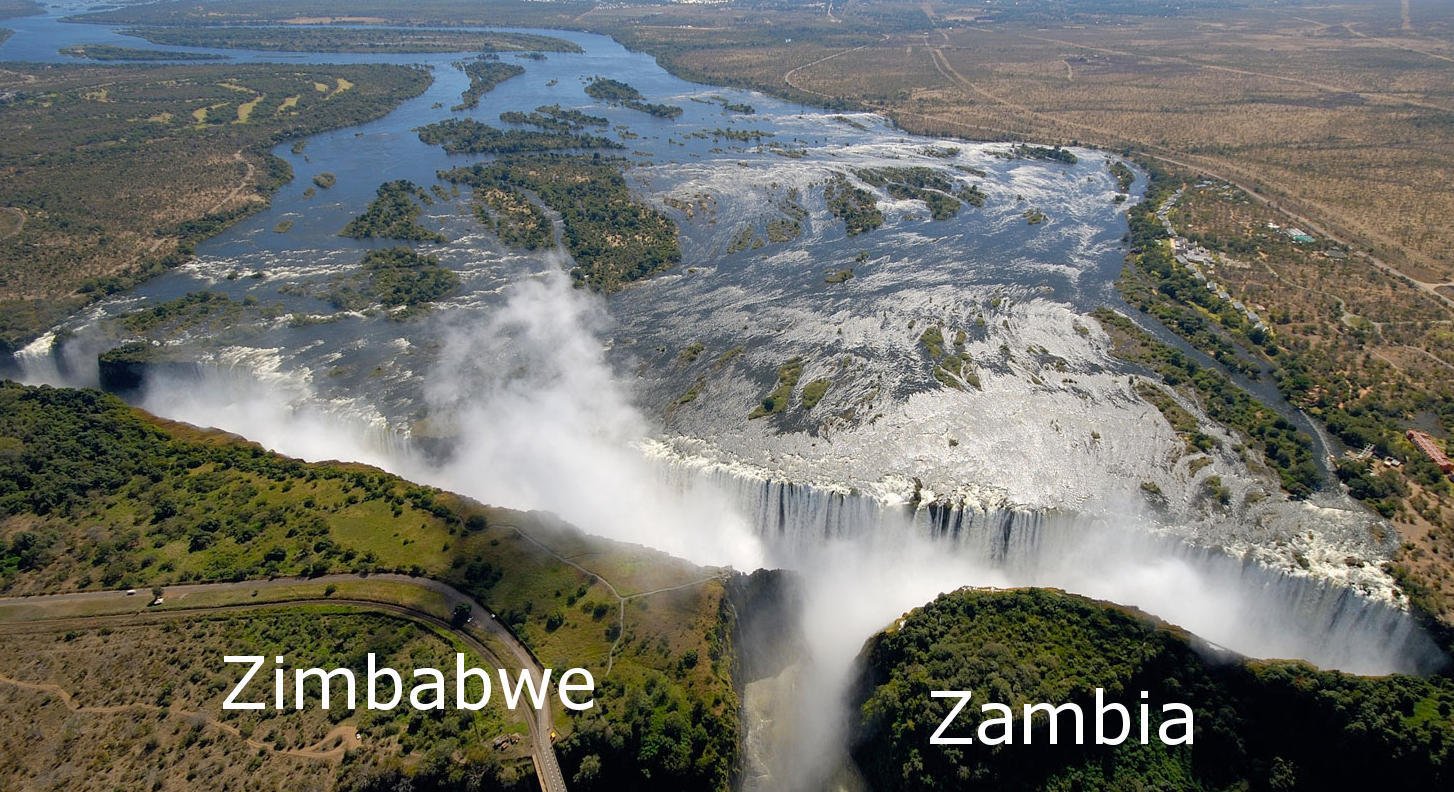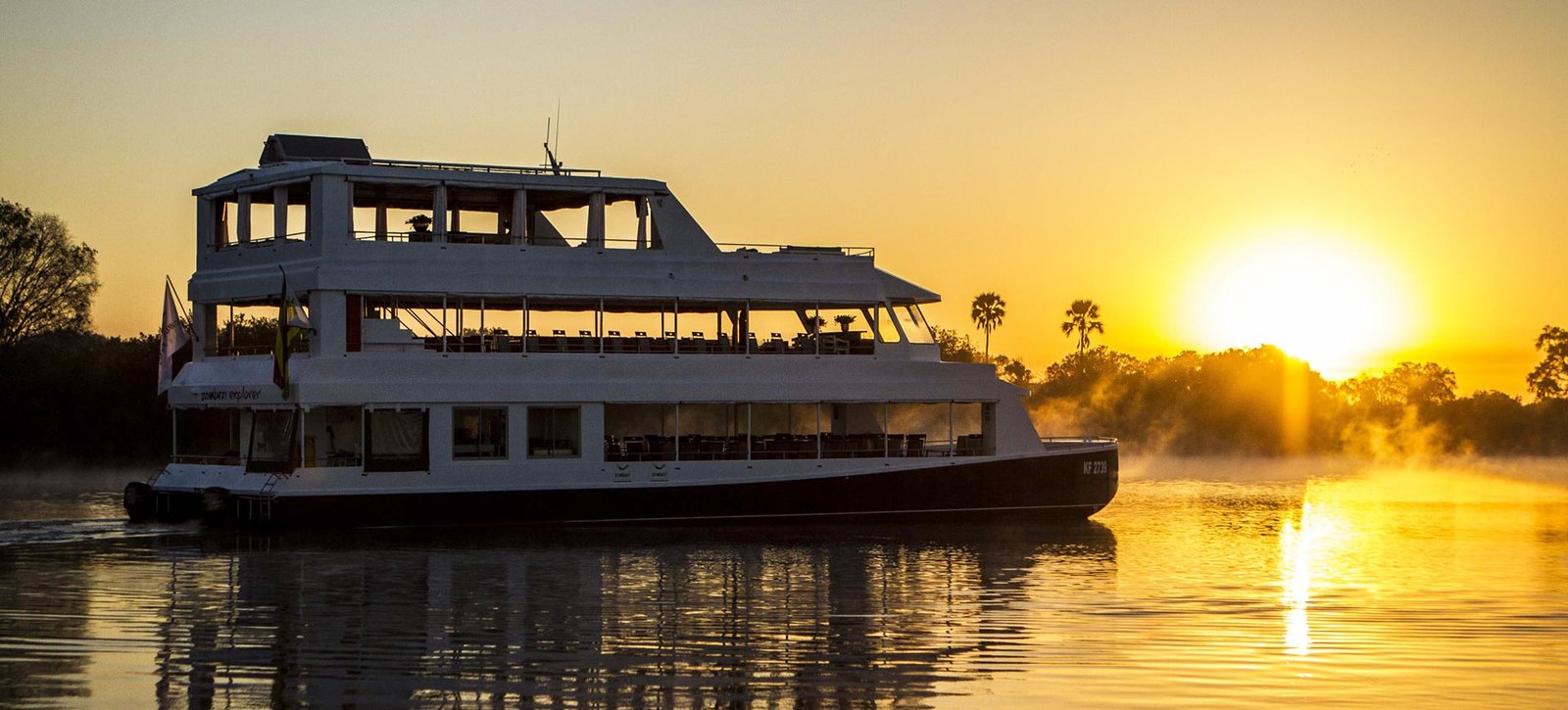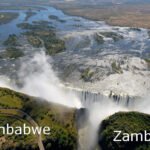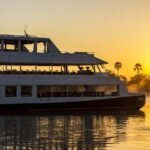Victoria Falls, one of the world’s most awe-inspiring natural wonders, is facing a growing threat from the effects of climate change. Located on the border between Zambia and Zimbabwe, this iconic waterfall has captivated visitors for centuries with its sheer size, power, and the mist-shrouded rainforest ecosystem it sustains. However, as the region experiences drier and hotter conditions, the future of Victoria Falls hangs in the balance.
Changes in Precipitation Patterns and Flow Rates

One of the most significant impacts of climate change on Victoria Falls is the increasing variability in precipitation patterns. Research in the late 2010s found that precipitation variability due to climate change is likely to change the character of the fall. In 2019, Victoria Falls experienced its worst drought in a century, causing the falls to dry up drastically.
The flow rate of Victoria Falls is directly related to the amount of precipitation in the Zambezi River basin. During the rainy season, the falls can have a flow rate of up to 3,000 m³/s, while during the dry season, the flow rate can drop to as low as 300 m³/s.
However, with the increasing variability in precipitation patterns, these seasonal fluctuations are becoming more extreme. In 2019, the flow rate of Victoria Falls dropped to just 10% of its normal level, with the falls nearly drying up completely. This was due to a combination of low rainfall in the Zambezi River basin and increased water usage for irrigation and other purposes. The low flow rate not only affected the appearance of the falls but also had a significant impact on the surrounding ecosystem and hydroelectric power generation.
Declining Water Levels
The most visible impact of climate change on Victoria Falls has been the dramatic decline in water levels in recent years. In 2019, the falls experienced their lowest water flow in over a century, with water levels dropping by more than 50% compared to the previous year. This dramatic reduction was the result of the worst drought to hit the region in over a century, with rainfall in the Zambezi River basin down by as much as 40% below average. The reduced water flow has had a profound impact on the appearance and experience of Victoria Falls.
During the low season, large sections of the falls have dried up completely, exposing the rocky gorge beneath. The iconic “smoke that thunders” has diminished to a mere trickle, and the mist-shrouded rainforest ecosystem that clings to the cliffs has begun to wither. This has not only diminished the visual splendor of the falls, but also threatened the delicate balance of the surrounding environment.
Impacts on the Ecosystem
The mists of Victoria Falls are essential to sustaining the lush rainforest ecosystem that has developed on the cliffs and gorges surrounding the falls. This unique environment is home to a diverse array of plant and animal species, including mahogany trees, fig trees, palms, and a variety of bird species such as falcons and black eagles. However, as water levels have declined, the mists that nourish this ecosystem have diminished.

The reduced moisture has caused the vegetation to dry out and die back, threatening the entire rainforest community. Many of the tree species that are adapted to the moist, misty conditions are struggling to survive, and the populations of birds and other wildlife that depend on this habitat are also at risk.
The loss of this unique ecosystem not only diminishes the natural beauty of Victoria Falls, but also has broader implications for the region’s biodiversity and ecological resilience. As climate change continues to impact the area, the future of this fragile rainforest hangs in the balance.
Impacts on Hydropower and the Regional Economy

Victoria Falls and the Zambezi River basin play a crucial role in the regional economy, providing hydroelectric power to both Zambia and Zimbabwe. The Kariba Dam, located downstream from the falls, is one of the largest hydroelectric power stations in Africa, generating over 1,600 megawatts of electricity. However, the declining water levels in the Zambezi River have had a significant impact on the Kariba Dam’s ability to generate power. During the 2019 drought, the dam’s water levels dropped to critical levels, leading to power outages and blackouts in both Zambia and Zimbabwe.
This disruption to the regional power supply has had far-reaching economic consequences, affecting industries, businesses, and households across the two countries. The impact of climate change on Victoria Falls and the Zambezi River basin also threatens the broader tourism industry in the region.
Victoria Falls is a major draw for visitors from around the world, and the tourism sector is a significant contributor to the economies of both Zambia and Zimbabwe. The decline in water levels and the degradation of the surrounding ecosystem have the potential to diminish the appeal of the falls as a tourist destination, with significant economic consequences for the region.
Adaptation and Mitigation Efforts
In response to the growing threat of climate change, both Zambia and Zimbabwe have taken steps to adapt and mitigate the impacts on Victoria Falls and the broader Zambezi River basin. These efforts include:
Water Management Strategies: The two countries have collaborated to develop more efficient water management strategies, including the implementation of water-saving technologies and the promotion of sustainable irrigation practices in the basin.

- Ecosystem Restoration: Efforts are underway to restore the rainforest ecosystem surrounding Victoria Falls, including the planting of native tree species and the implementation of conservation measures to protect the area’s biodiversity.
- Renewable Energy Development: Both Zambia and Zimbabwe are investing in the development of renewable energy sources, such as solar and wind power, to reduce their reliance on hydroelectric power and diversify their energy mix.
- Sustainable Tourism Practices: The tourism industry in the region is also working to adopt more sustainable practices, such as promoting eco-tourism and reducing the environmental impact of visitor activities.
- Reducing water usage: Implementing water conservation measures and promoting efficient irrigation practices can help reduce the strain on the Zambezi River basin
However, the scale and complexity of the challenge posed by climate change means that these efforts may not be enough to fully mitigate the impacts on Victoria Falls and the surrounding region. Continued international cooperation and support will be essential to ensure the long-term preservation of this natural wonder.
Conclusion
The impact of climate change on Victoria Falls is a stark reminder of the fragility of our natural wonders in the face of a rapidly changing climate. As the region experiences drier and hotter conditions, the future of this iconic waterfall and the delicate ecosystem it sustains hangs in the balance.

The decline in water levels, the degradation of the rainforest, and the disruption to the regional economy all highlight the urgent need for comprehensive and coordinated action to address the impacts of climate change. While Zambia and Zimbabwe have taken important steps to adapt and mitigate these challenges, the scale of the problem requires a global response.
Preserving the wonder and majesty of Victoria Falls for future generations will require a concerted effort to reduce greenhouse gas emissions, support sustainable development, and invest in the restoration and conservation of the region’s natural resources. Only by taking decisive action now can we ensure that this natural treasure continues to captivate and inspire visitors for centuries to come.
Top Selling Packages
3-Day Victoria Falls Adventure
3-Day Makuni Big 5 Safari Adventure
13 Days Luxury Zimbabwe Safari
10 Days Zambezi and Victoria Falls
9 Days Zimbabwe Victoria Falls Safari
3 Days Victoria Falls Adventure
5 Days Victoria Falls and Hwange
Victoria Falls Honeymoon Itinerary: Romantic Escapes
7-Day Tour: Exploring Victoria Falls
9 Days Victoria Falls and Okavango
6 Days Victoria Falls and Hwange
9 Days Hwange and Victoria Falls
7 Days Victoria Falls, Hwange NP
Packages with Gorilla trekking Experience
9 Days Victoria Falls, Hwange, Matobo
5 Days Victoria Falls and Gorilla
9 Days Luxury Namibia and Gorilla Trekking
12 Days Kruger Reserves and Gorilla
3 Days Uganda Gorilla Trekking
South Africa Packages
12 Days Exclusive Safari and Cape Splendor
10 Days Kruger Private Reserves & Cape Town
12 Days Kruger Reserves and Gorilla Trekking Safari
4 Days Tremisana Lodge Kruger Park Safari
3 Days Kruger and Swaziland Cultural Tour
3 Days Kruger National Park Camping Safari
10 Days Kruger Private Reserves & Cape Town
Namibia Packages
9 Days Luxury Namibia and Gorilla Trekking Safari
6 Days Etosha, Swakopmund & Sossusvlei (Camping)
3 Days Etosha Guided Camping Safari
Zimbabwe Packages
5 Days Victoria Falls and Hwange National Park Safari
4 Day Victoria Falls Fly-in Safari
3 Days Victoria Falls Experience Staying at Phezulu Lodge
3 Days Kariba Sailing Safari (Self-Drive Add-on)
1 Day Victoria Falls, Game Drive with Bush Dinner
9 Days Hwange and Victoria Falls Safari
8 Days Chobe and Victoria Falls Tour
7 Days Victoria Falls, Hwange NP and Matobo NP Experience







Leave a Reply